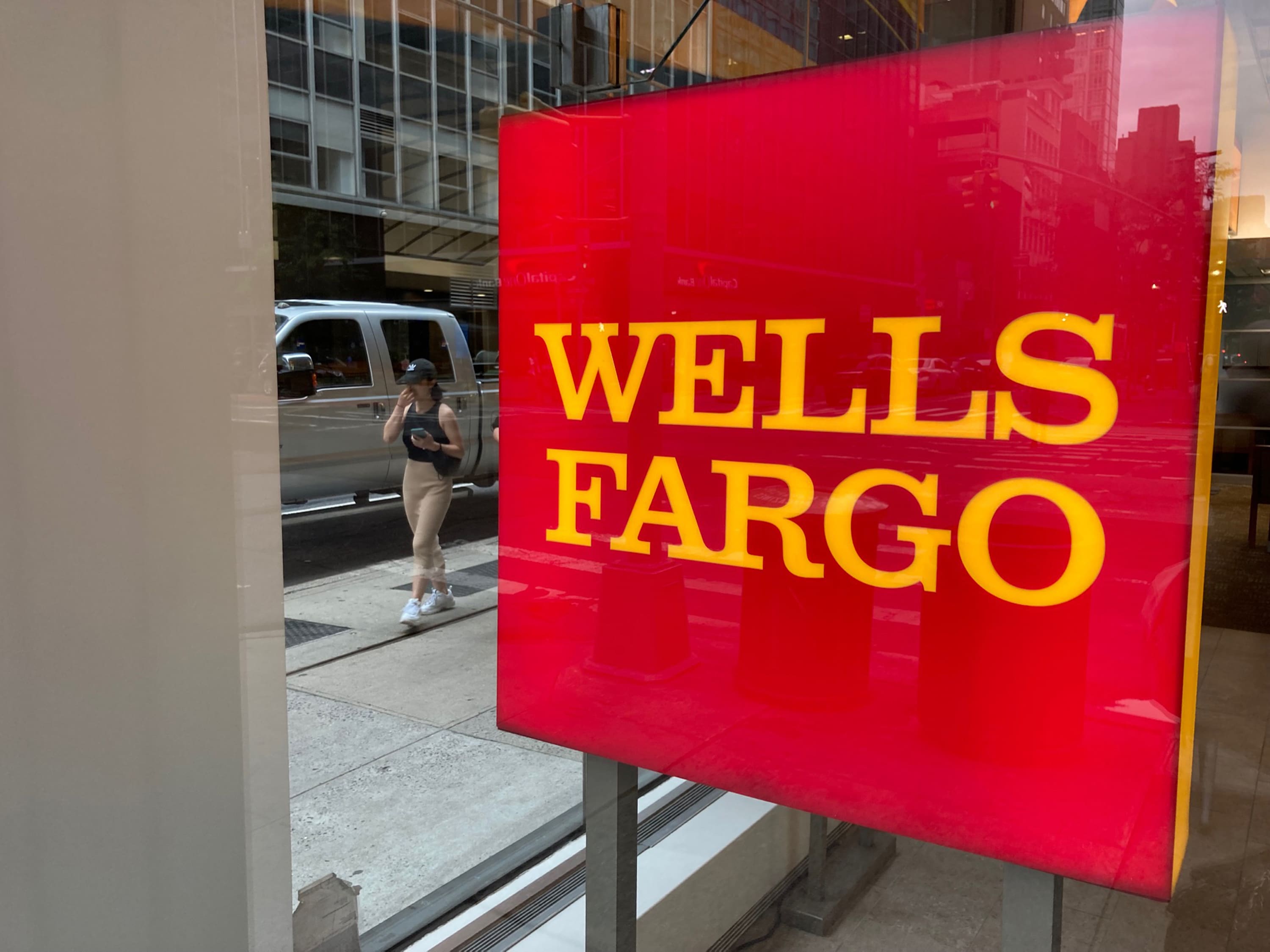
Wells Fargo signage on May 5th, 2021 in New York City.
Bill Tompkins | Michael Ochs Archives | Getty Images
(This article was sent first to members of the CNBC Investing Club with Jim Cramer. To get the real-time updates in your inbox, subscribe here.)
In today’s morning note, we mentioned how analysts at Morgan Stanley shuffled around their ratings in the banks this morning. Among the changes, the analysts cut PNC Financial (PNC) from equal-weight to underweight, downgraded Citigroup (C) to equal-weight from overweight and upgraded Goldman Sachs (GS) to equal-weight from underweight.
But perhaps the biggest, market-moving change of them all was Morgan Stanley upgrading Wells Fargo to overweight from equal-weight. Wells Fargo (WFC) is one of the largest positions in Charitable Trust, so let’s dive into the analyst call.
Morgan Stanley noted that the biggest driver of the WFC rating change was higher fed funds futures, which essentially means that the Federal Reserve is expected to raise interest rates next year. Morgan Stanley believes an accelerated taper means earlier rate hikes, and they pointed out that banks are the only sector that has outperformed when real rates rise.
Higher rates can give WFC a boost
Wells Fargo has a ton of positive leverage to higher interest rates. Morgan Stanley wrote this morning that every 50-basis point increase in fed funds increases Wells Fargo’s net interest income by 7% and earnings per share by 16%. The omicron variant is an unknown variable to what the Fed may do next, but Morgan Stanley thinks at worse the variant delays the economic recovery by one quarter.
Wells Fargo also lots of firepower for capital returns. The bank is currently working through a massive $18 billion share repurchase program, but it may not be limited to that number. Management has the flexibility to increase capital distributions because of how much excess cash is sitting on the balance sheet, especially relative to peers. According to Morgan Stanley, excess capital at Wells Fargo currently sits at 10% of its market cap compared to 5% for the median large-cap bank.
Loading chart…
We like the Morgan Stanley call this morning, and it is not so different from what we have said about our favorite banks. When fears related to the omicron variant first rattled the market a few weeks ago, we suggested the banks as a group to key on into weakness. The group has certainly held up well amid the volatility partly because of the rotation out of high multiple stocks and into value-based names.
Morgan Stanley (MS) has been our preferred financial to pick up when the group has trade lower. Looking back, we added to our MS position three times since the beginning of November because of the strong franchise, fee-based revenue model, solid dividend yield, and consistent share repurchase activity. As analysts at Citi put it in their upgrade of MS to Buy from hold last Friday, Morgan Stanley is “high quality at a reasonable price.”
Even though our attention has been on Morgan Stanley, we have not forgotten about Wells Fargo. We did not buy any shares here strictly for portfolio management reasons; Wells Fargo is already one of the largest positions in the portfolio. We think Wells Fargo is more of a restructuring story because of its cost-cutting initiatives and timing of the asset cap removal, but it’s also a great way to play higher interest rates, if that is something you believe.
The CNBC Investing Club is now the official home to my Charitable Trust. It’s the place where you can see every move we make for the portfolio and get my market insight before anyone else. The Charitable Trust and my writings are no longer affiliated with Action Alerts Plus in any way.
As a subscriber to the CNBC Investing Club with Jim Cramer, you will receive a trade alert before Jim makes a trade. Typically, Jim waits 45 minutes after sending a trade alert before buying or selling a stock in his charitable trust’s portfolio. If the trade alert is sent pre-market, Jim waits 5 minutes after the market opens before executing the trade. If the trade alert is issued with less than 45 minutes in the trading day, Jim executes the trade 5 minutes before the market closes. If Jim has talked about a stock on CNBC TV, he waits 72 hours after issuing the trade alert before executing the trade. See here for the investing disclaimer.
(Jim Cramer’s Charitable Trust is long WFC, MS.)




